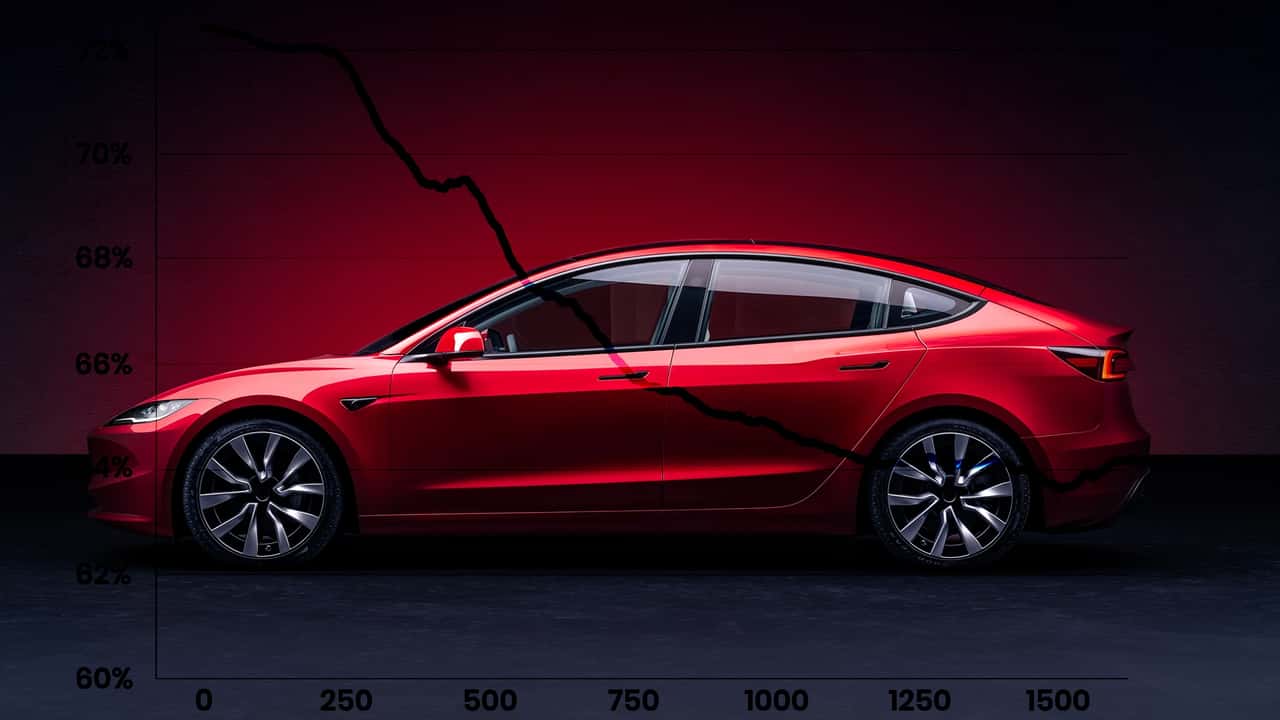One of the first questions I get asked about my Tesla is, “What happens when you need to replace the battery?” It’s easy to brush off because there are plenty of facts regarding failure statistics, warranty, and even the cost should it happen. What people don’t typically ask about is battery degradation.
It’s a real thing with EVs, just like that iPhone you’re reading this article on. As batteries age and go through charging cycles, they lose capacity. A new study by Recurrent digs into that data by studying 12,198 Teslas, and the report shows the cars are only achieving a fraction of their advertised EPA range well before most people pay off their loans.
Get Fully Charged
EV Battery Degradation
Battery degradation is a fact of life. However, some battery chemistries—like lithium iron phosphate (LFP) packs found in some Tesla models—are more susceptible to calendar aging than others. Either way, if you own an EV, don’t expect perfect range forever.
The data from Recurrent shows that after approximately three years (right around the 1,100-day mark), the average Tesla Model 3 and Model Y are achieving just 64% of their original EPA-rated range.
Recurrent can pinpoint battery life using the data it collects from 7,078 Model 3s and 5,120 Model Ys. It used nearly 1.6 million observations (around 130 observations per vehicle) to determine average fleet-wide battery degradation statistics used in its report.

It’s important to point out that the Teslas observed in Recurrent’s study never actually appear to hit the advertised EPA range. Even at 0 miles, the cars only achieve between 70% and 72.5% of their advertised EPA range. That means a 2023 Tesla Model 3 Performance, rated by the EPA as having 315 miles of range, may be observed hitting around 230 miles on a single charge out of the box.
This isn’t a problem unique to Tesla. As Recurrent says, “The basic EPA testing protocol gets it wrong for all EVs.” It doesn’t factor in temperature changes or driving above 60 miles per hour, plus it allows for manufacturer adjustments.
The relevant factor to consider here is the delta between a fresh car and how much range it still has after three years. This appears to be between 6% and 8.5% before leveling off at the three-year mark—not too shabby.
Recurrent’s data also shows that Teslas don’t appear to be as affected by DC fast charging as some other brands, which is a plus for people who like to take long road trips or don’t have access to Level 1 or Level 2 charging at home.
Tesla Owners Get Only 64% Of EPA Range After Just Three Years: Study
A recent study conducted by a leading automotive research firm has revealed alarming data about Tesla’s battery degradation over time. According to the study, Tesla owners are experiencing a significant decrease in range after just three years of ownership, with owners getting only 64% of the EPA-rated range.
This is a worrying trend for Tesla owners, who have come to expect top-notch performance and range from their electric vehicles. The study found that the average Tesla Model S lost about 13% of its range after the first year, and an additional 9% in the second year. By the third year, owners were experiencing a 23% decrease in range compared to the EPA rating.
This decline in range can be attributed to several factors, including high usage rates, extreme weather conditions, and battery age. Tesla owners who drive their vehicles frequently or charge them to 100% on a regular basis are more likely to experience faster battery degradation. Additionally, extreme temperatures – both hot and cold – can have a negative impact on battery performance.
While Tesla vehicles are known for their cutting-edge technology and impressive range, this study highlights the importance of proper battery maintenance and care. Tesla owners are advised to follow best practices for prolonging battery life, such as avoiding frequent fast charging, keeping their vehicles shaded in hot weather, and not letting the battery drain to empty.
In response to this study, Tesla has stated that they are continuously working to improve battery technology and longevity. The company is committed to providing the best possible experience for their customers, and will continue to research and develop new ways to enhance battery performance.
Despite this setback, Tesla remains a leader in the electric vehicle industry, with innovative technology and a loyal customer base. As electric vehicles become more prevalent in the automotive market, it is crucial for manufacturers to address issues like battery degradation and range anxiety to ensure customer satisfaction and confidence in the technology.
In conclusion, the recent study on Tesla battery degradation serves as a reminder for owners to take good care of their vehicles and follow recommended maintenance practices. With proper care and attention, Tesla owners can enjoy their vehicles for many years to come, without sacrificing performance or range.

